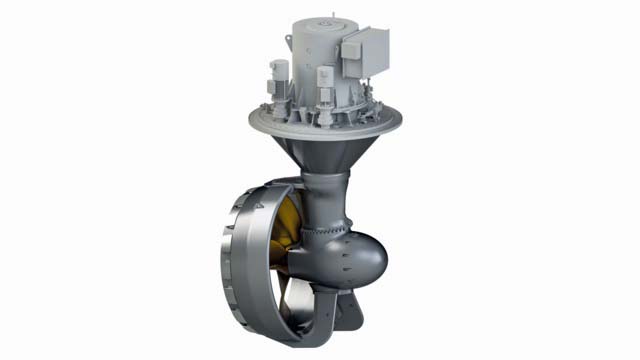With a new rudder propeller optimised for DP use, Schottel is meeting the growing requirements for service operation vessels (SOVs) to operate efficiently and reliably.
The SRP-D (‘Dynamic’) is a further improved variant for demanding DP operations in SOVs. When developing the SRP-D, CFD simulations and calculations were taken into account.
Manfred Heer, VP Technology, Schottel, said: “With the SRP-D, we have significantly increased the DP performance of our rudder propellers, resulting in a product that meets the requirements of today’s offshore wind industry even better. Based on the proven principle of the Schottel RudderPropeller, a cost-efficient yet powerful solution has been developed that greatly improves the positional accuracy of the vessel for the special DP requirements of these applications. For customers, this means a significant increase in safety and possible operating times on offshore structures, especially in difficult weather conditions.”
The new SRP-D variants are characterised by reduced propeller acceleration/deceleration times. In combination with a high-speed azimuth steering system with reinforced gear components, the SRP-D enables faster thrust allocation than conventional rudder propellers. Thanks to the shorter response times, it is possible to react faster and in a more targeted manner to external forces from wind, weather and currents, thus achieving a higher positional accuracy of the vessel. At the same time, fuel consumption is reduced. In addition, the SRP-D is marked by its low profile, vertically integrated LE-Drive as well as an additional eight-degree tilt of the lower gearbox.
Despite its integrated design, the LE-Drive allows a free choice of motor for vessels with electric, ideally battery-supported energy supply. Due to its compact design, the LE-Drive opens up more freedom in vessel design. The SRP-D is optionally available with drive train in Z-configuration.
Thanks to the additional lower gearbox that has an eight degrees downward tilt, the interaction between propulsion unit and hull as well as the propeller flow interaction are reduced. This results in increased thrust efficiency in DP operation and minimises ‘forbidden zones’.
In addition to recently delivered SOVs such as the Wind of Hope, the Bibby WaveMaster Horizon or the installation vessels Voltaire and Les Alizés which are currently being built for Jan De Nul, Schottel has many years of expertise in the offshore market. In total, over 600 offshore vessels have been equipped with the German propulsion systems.



